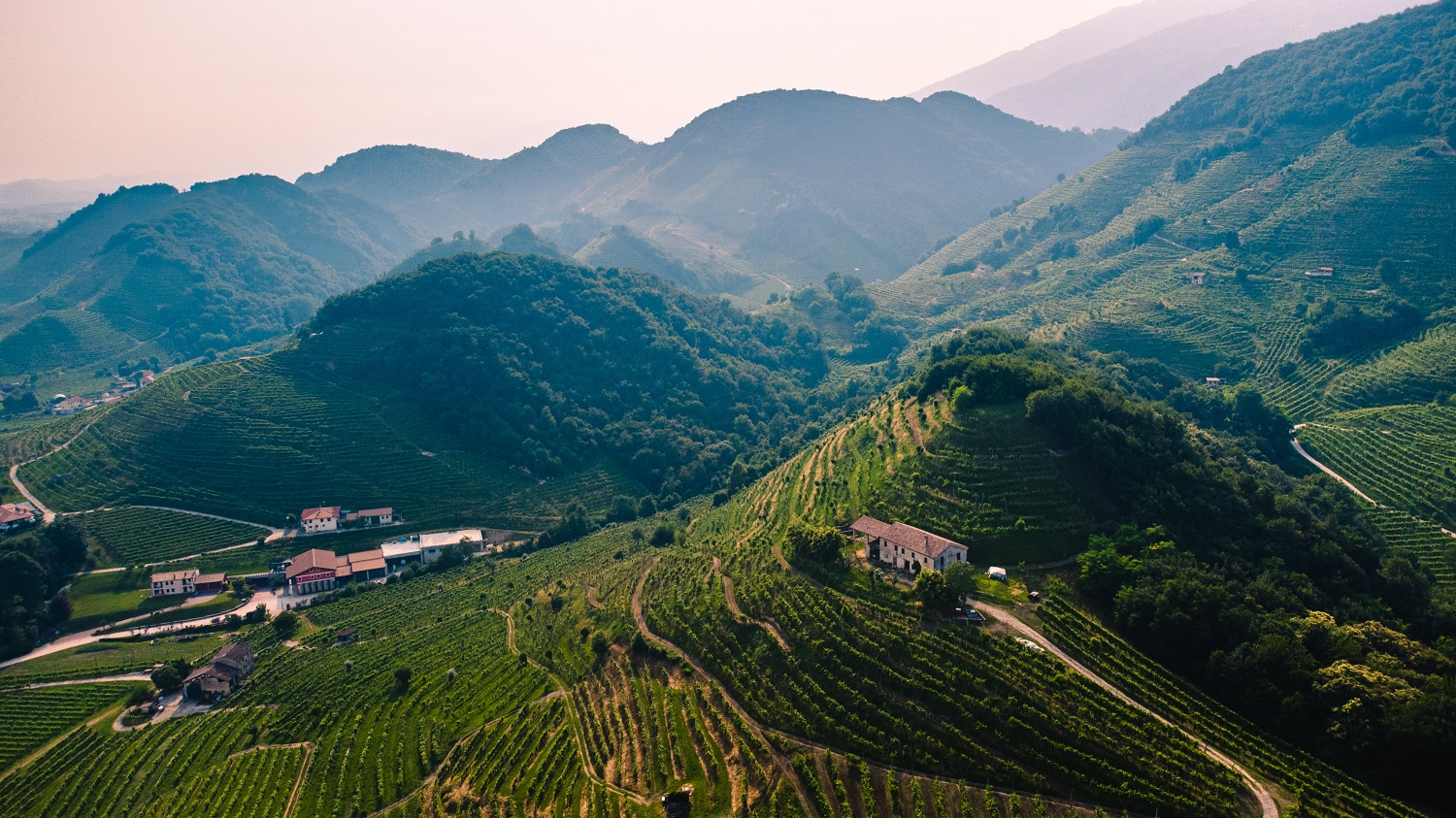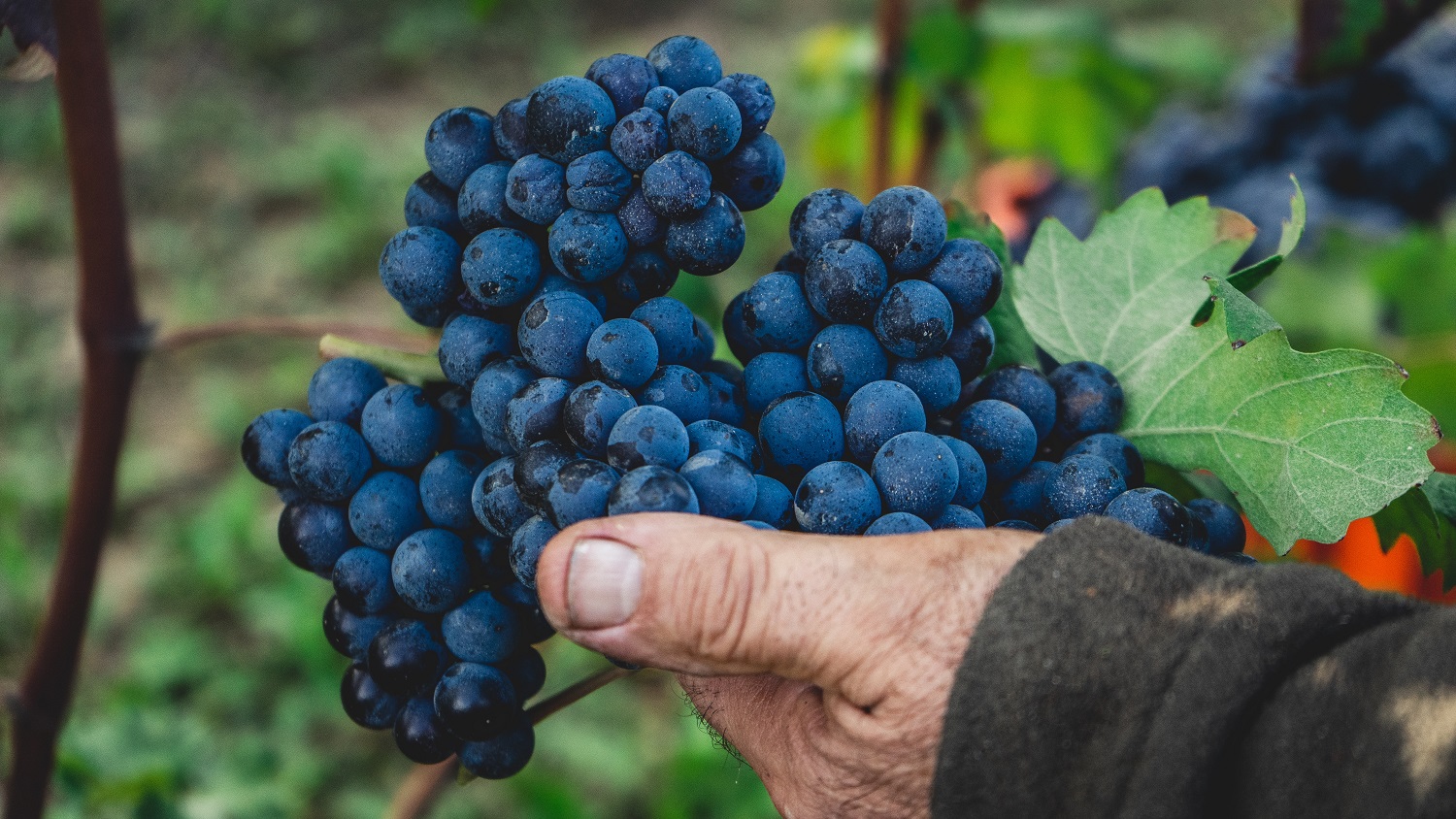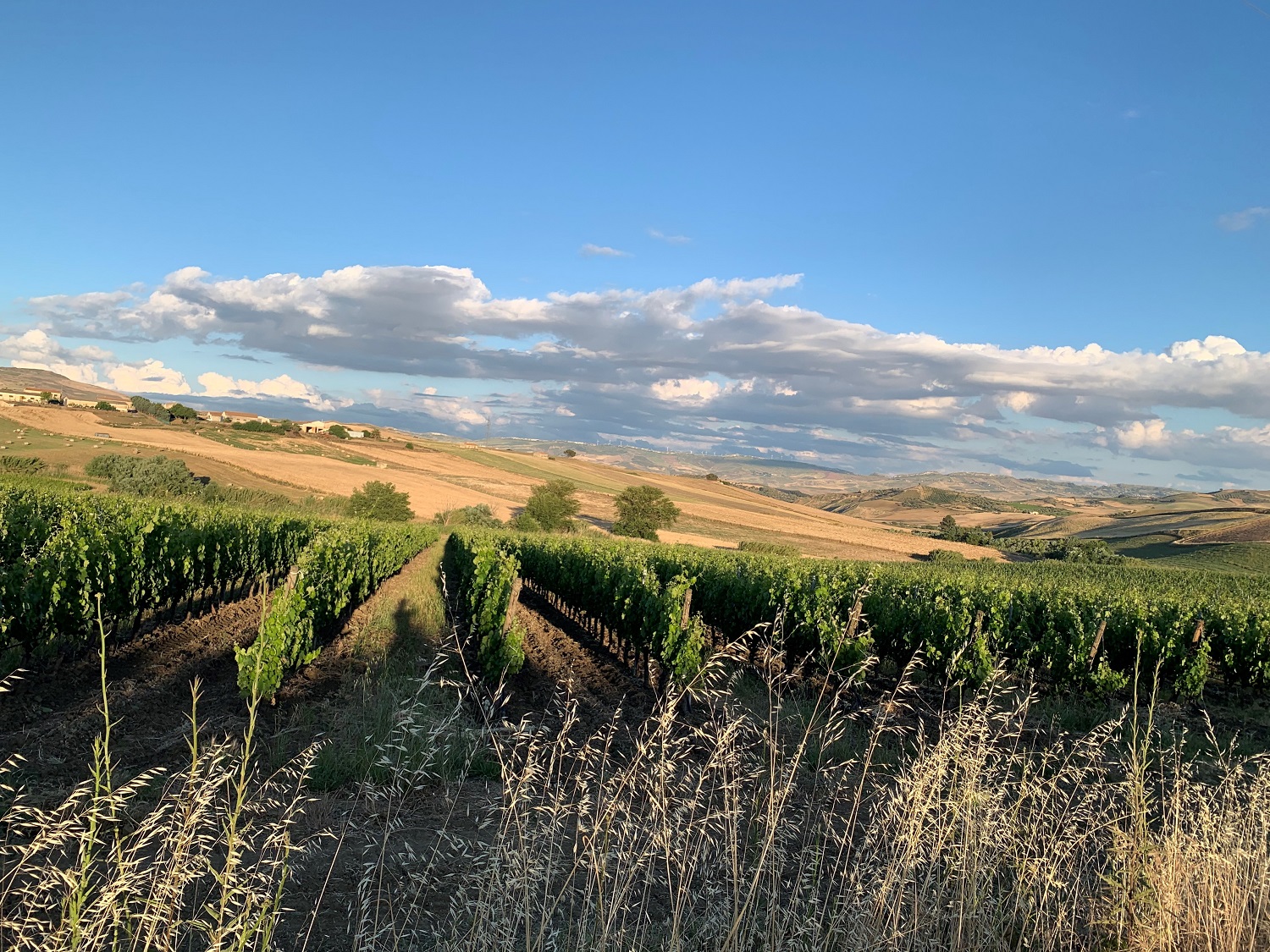A Guide to Italy’s Key Grape Varieties
From Piedmont to Tuscany, Puglia to Sardegna, Italy’s twenty administrative regions boast an incredible array of both indigenous and international grape varieties. Each Italian region has its own distinctive style and flair, much like the country's food. Despite this volume of "local talent", however, many of the most coveted Italian wines have embraced the influx of French grape varieties that undeniably produce impressive wines, particularly in the realm of "Super Tuscans”. In this guide we take a deep dive into some of the key varieties to be found.

How many grape varieties are there in Italy?
Ian D’Agata’s comprehensive Native Wine Grapes of Italy estimates that Italy cultivates roughly 2,000 native grape varieties - though only just under 25% of these are used to make wine in commercially significant volumes.
What styles of wine does Italy produce?
The many indigenous and native varieties to be found growing in Italian soil give winemakers a superb opportunity to produce an equally large array of wine styles, both still and sparkling, red, white and rosé and at a range of sweetness levels.
What are Italy’s most popular grape varieties?
From Sangiovese and Montepulciano to Glera and Pinot Grigio, there are many popular grape varieties in Italy. We take a look at a few of the country’s main regions, giving an insight into some of the many varieties Italy has to offer:
In the North….
Situated in the foothills of the Alps, near the town of Bolzano, the Alto Adige is the most northerly region in Italy. With its mild, Alpine climate, the influence of altitude and the protection offered by the mountains to the North, this is an exciting region for wine production. Vineyards are planted on terraces on the valley sides of the River Adige. Key varieties here are Pinot Bianco and Pinot Nero, in addition to Chardonnay, Lagrein and wonderful white blends.
Pinot Bianco – A leading white grape variety in the region, producing subtle, elegant whites with apple character and refreshing acidity. The historic cooperative Cantina Terlano boasts a well-established reputation for their incredibly long-lived wines made from Pinot Bianco, using lees aging to produce wines with beautiful complexity.
Pinot Nero – This international red variety (Pinot Noir) finds a beautiful expression in the region giving well-structured wines with notes of red and black fruit, together with violet and spice complexity. Fresh and lively styles can be found from Franz Haas, whilst historic Sudtirol winery, Cantina Girlan produces intensely flavoured reds with lively acidity.
Schiava – A historic group of red varieties also known as ‘Vernatsch’ in German, that give pale red wines with beautiful strawberry and violet character. One for fans of the delicate, refreshing reds of Marsannay and Volnay, a beautiful example is produced by Cantina Kaltern Leuchtenberg.

The region of Lombardy lies in the central north of the Italian peninsula, and is a terroir that is characterised by its varied geographical features, including the Alps in the north, the Po River and the major lakes such as Lago Iseo and Lago di Garda; resulting in an exciting variety of wines.
Chiavennasca – The local name for Nebbiolo, discover Nino Negri’s glorious offerings.
Uva Rara – A rare red variety that tends to be used in blends, giving red fruit and spice notes. Discover the single varietal expression produced by Frecciarossa.
Chardonnay / Pinot Noir – Traditional method sparkling wines, such as the wines of Franciacorta. Try the superb offerings from Ca’ del Bosco and Bellavista.
Producing some of Italy’s most highly-sought after premium quality wines, the region of Piedmont (Piemonte) is situated in the north-west corner of Italy. Home to the historic wines of Barolo, Barbaresco and Alba, the wonderful sparkling wines of Asti and the refreshing whites of Gavi.
Nebbiolo – This black grape variety produces wines that are usually pale ruby in colour, with a wonderful red fruited, floral intensity. Structured by a full body, high acidity and tannins and often-high alcohol levels. These are truly powerful wines, built to evolve and stand the test of time, the likes of Barolo and Barbaresco. Look to a star-studded cast of highly sought-after producers, the likes of Roagna, Conterno and Gaja.
Barbera – The most planted black variety in Piemonte, plantings of this variety are concentrated around Asti, Alba and Monferrato. The resulting wines tend to have refreshing acidity, low levels of tannin, and red plum and cherry character, with black pepper notes. Discover key producers the likes of La Spinetta, Giacomo Bologna and Giacomo Conterno.
Dolcetto – This early ripening traditional Piemontese black variety produces wines with fresh primary fruit character with notes of fragrant black fruit, ripe plum, liquorice and almond notes. Giving a soft and rounded palate, low acidity and structural tannins, such as the wines of Luciano Sandrone.
Cortese – High quality, dry white wines with zesty citrus, white peach and blossom notes used to produce the hugely popular Gavi style.
Muscat Blanc à Petits Grains (Moscato Bianco) – Piemonte’s most widely planted white grape variety, used to produce the region’s popular sweet sparkling wine style, Moscato d’Asti. Beautifully aromatic and floral wines with notes of orange blossom and stone fruit.

Friuli
Italy’s most north-easterly region, Friuli Venezia Giulia (known as Friuli) borders Austria and Slovenia and boasts a reputation for high quality single-variety white wines (look out for the key DOCs of Collio and Collio Orientali del Friuli) in addition to a smaller percentage of reds. Friuli is also a key region for the production of orange wines.
The region’s wines showcase a broad spectrum of both local and international grape varieties, including:
Friulano – Plays an important role in Friuli, being somewhat of a regional speciality. This white grape variety produces dry, usually unoaked wines with characterful orange citrus, floral, orchard fruit and almond notes, together with refreshing acidity. Lovely examples can be found from Lis Neris and Livio Felluga.
Refosco – The most planted black grape variety in the region, Refosco dal Peduncolo Rosso is a vigorous variety that is used to produce wines with red cherry and herbal character, such as the Morus Nigra from husband and wife team Lorenzo Mocchiutti and Federica Magrini.
Pinot Grigio – A versatile white grape, used to produce an array of styles: from the simple, light-bodied, refreshing white wines, with a relatively neutral profile, through to riper, nuttier more complex examples. Enjoy discovering the honeyed, lime blossom character of a Franz Haas Pinot Grigio or the remarkable complexity of the wines of Friuli producer, Livio Felluga - with intense yet elegant aromas of melon and candied fruit.

Situated in North-East Italy, the Veneto is one of Italy’s largest wine-producing regions. Showcasing a wide range of grape varieties, styles and price points, the region is home to some of Italy’s best-known wine styles including Amarone, Valpolicella, Ripasso, Passito and Soave from standout producers Allegrini, Quintarelli, Bertani, Gasparini, Pieropan, Zenato, Cesari and Venissa to name but a few.
Key grape varieties to look out for in terms of still wines include:
Corvina (Corvina Veronese) – This red grape variety is key to Valpolicella and Bardolino wines and its thick skins make it well suited to the ‘appassimento’ grape drying technique, for which the Veneto region is famous. Giving wines with bright acidity, medium tannins and body and notes of sour cherry, herbs, violets and bitter almonds.
Valpolicella Red Blends – These tend to be a blend of the region’s key red varieties: Corvina, Corvinone, Rondinella together with other permitted varieties such as Molinara. Key wine styles include the dry/off-dry semi-dried grape wine, Amarone della Valpolicella. Look out for producers including Quintarelli and Allegrini.
Garganega – The historic white grape variety of the Veneto, giving wines with high acidity and notes of lemon, orchard fruits, white pepper and, in the case of riper styles, stone fruit. The Pieropan family produce a wonderfully linear and smooth Soave from Garganega, whilst Guerrieri Rizzardi produces an easy-drinking Soave Classico from 65 year old pergola vines on south facing terraces.
And not just still wines either: the Veneto region ranges from the flat plains of the Po delta to the south to the foothills of the Alps in the North. As such, it is the beating heart of Italian sparkling wine production, with stellar Prosecco on our shelves from the key areas of Valdobbiadene and Cartizze produced from the semi-aromatic Glera variety.
Emilia-Romagna
The southernmost region of northern Italy, Emilia-Romagna is home to the unique sparkling red wine, Lambrusco. Produced from the family of red Lambrusco varieties including Lambrusco di Sorbara, Lambrusco Salamino and Lambrusco Grasparossa.
Delving into the regions of Central Italy…
Le Marche
The central Italian region of Le Marche stretches from the Adriatic Sea to the Apennines. Mainly producing red blends from Montepulciano and Sangiovese grapes, the region is also home to the white variety, Verdicchio.
Verdicchio – This late ripening white variety produces pale lemon coloured wines with refreshing high acidity and notes of citrus, apple, blossom and nutty almond notes. Lees aging can be used often with Riserva styles to produce wines with greater complexity. Key examples include the wines of Villa Bucci, Tenute San Sisto and Moncaro.
One of the jewels in Italy's winemaking crown, the region is primarily known for producing the world's greatest Sangiovese based wines in the form of Chianti, Brunello di Montalcino and Vino Nobile di Montepulciano.
Sangiovese – Strongly associated with the rolling hills of Tuscany, this is one of Italy’s signature grape varieties, and is used to make the iconic styles of Chianti Classico, Rosso di Montalcino and Brunello di Montalcino. The dry red wines that this superb variety produces are characterised by their bright primary red fruit (think strawberry, raspberry, redcurrant, red plum), herbal notes of thyme and tea leaf and refreshing high acidity. With high levels of complex, firm tannins in youth (which soften with age) and a marvellous affinity with French oak, Sangiovese produces stunningly ageworthy wines that gain a beautiful savoury complexity with time in bottle.
Discover the beautiful reds of world-renowned Tuscan producers such as Biondi-Santi, Antinori, Soldera and Gaja. Explore the iconic 100% Sangiovese wines of Le Montervertine’s Pergole Torte or Bibi Graetz’s Testamatta, with grapes sourced from exceptional old Tuscan vines.
Alongside these more traditional styles are the so-called Super Tuscans - wines that take inspiration from the wines of Bordeaux and the New World, often incorporating international grape varieties such as Cabernet Sauvignon, Merlot and Syrah. In addition to dry reds, the region produces a number of fantastic dry white wines made from Vernaccia, Sauvignon Blanc and Chardonnay. Tuscany has long been known for the 'passito' dessert wines and the highly prized Vin Santo - a traditional sweet 'straw' wine usually produced using a blend of Trebbiano Toscano and Malvasia.
Abruzzo
Lying to the south of Le Marche and to the north of Puglia, the Abruzzo region is situated on Italy’s eastern coast. Key varieties include:
Montepulciano d’Abruzzo – A key red variety (not to be confused with the Tuscan town of Montepulciano). Discover the truly magnificent wines of Emidio Pepe and the ripe berried complex reds from the Praesidium winery.
Trebbiano Abruzzese – This vigorous white grape variety is used to produce precise and mineral wines with refreshing acidity, such as the wines of family-owned estate, Tiberio, or the golden yellow wines of historic estate, Valentini.

And in the South…
Often referred to as the ‘heel’ of Italy, the southern Italian region of Puglia is surrounded on three sides by the Mediterranean Sea. The region’s hot, Mediterranean climate makes it wells suited to ripening black grapes, such as:
Primitivo (Zinfandel) – Tends to produce wonderfully full-bodied dry reds, with high alcohol levels, bursting with black fruit character together with violet and liquorice complexity. For those with a sweeter tooth, the Primitivo variety is also used to make rich and powerful sweet wines, with honeyed, dried fruit character.
The Southern region of Campania lies south of Lazio, between the Mediterranean sea and the Apennine Mountains.
The white grape varieties of Fiano and Greco take centre stage, whilst Aglianico is a key variety used in the production of red wines.

The Islands
Situated off the coast of Tuscany, the picturesque Italian island of Sardinia produces award-winning red wines from the main varieties:
Cannonau (Grenache Noir) and Carignano (Carignan) for reds and the tropical and mineral white Vermentino – on its own or in a blend with Chardonnay.
Once famous for sweet and fortified wines like Marsala, modern Sicily is surely one of Europe's most fascinating and dynamic wine regions. Enjoying consistent sunshine, low rainfall and an abundance of coastal breezes, the island is ideal for grape growing. The mineral-rich soils of Mount Etna in the east and the higher altitude vineyards also offer exciting opportunities for experimentation and innovation with traditional and 'international' grape varieties alike from top wineries including Planeta, Frank Cornelissen, Tenuta dell Terre Nere, COS and Passopisciaro. Key varieties include Nero d’Avola and Nerello Mascalese for reds, and Carricante, Inzolia and Grillo for white wines.
Pantelleria
Situated closer to Tunisia than to the rest of Sicily, the arid island of Pantelleria uses the aromatic Moscato d’Alessandria (Zibbibo) variety to produce the wonderful decadence of passito style sweet wines. Discover the complex and aromatic Ben Ryé from Sicilian producer Donnafugata which boasts a gorgeous bouquet saturated with aromas of honey, candied citrus peel, apricot, tangerine blossom and herbs.
Further reading....
Discover more of what Italy has to offer…
Kerin O`Keefe’s wonderfully informative work on the wines of Barolo and Barbaresco.
A wonderful read on Sicily The Wine Route exploring the unique wines of this special island.
Discover the history behind Angelo Gaja’s single vineyard of San Lorenzo in the village of Barbaresco.
Delve deeper into the history and character of grape varieties…
The ultimate guide to the grapes of the world from Jancis Robinson and Oz Clarke’s Comprehensive Guide to Varieties and Flavours.
